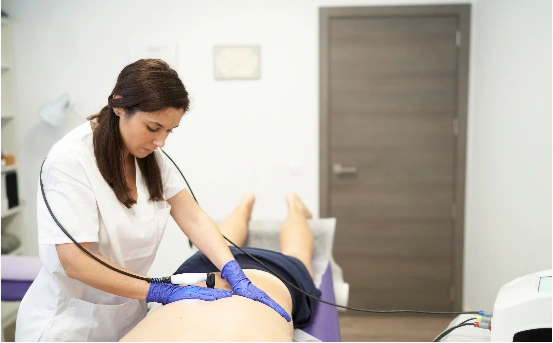The knee is a complex and vital joint in the body. It’s responsible for weight-bearing and daily functionality. The patella is at the heart of this mechanism. Misalignment or instability of the patella can cause chronic pain, dislocations, and decreased mobility. patellar realignment surgery can help.
Patellar Realignment Surgery is an orthopedic procedure that corrects the position of your kneecap. This surgery is designed to correct the position of the kneecap, restore the proper tracking of the kneecap within the femoral grove, relieve pain, stop further dislocations and improve the overall function. This procedure can be life-changing, whether it is due to an injury, structural abnormalities or congenital issues.
Learn about the reasons why a patellar realignment surgery is needed. Explore its causes, symptoms and diagnosis. Understand the expected recovery and long term outcomes.
Why Patellar Realignment Surgery Is Necessary
1. Patellar Subluxation or Dislocation
One of the most common indications of patellar realignment is recurrent subluxation of the kneecap. If this condition is frequent, conservative measures like bracing and physical therapy may not be as effective.
2. Structural Abnormalities
Surgery may be required to correct anatomical anomalies such as a high-riding kneecap ( patella alt) or rotational deformities.
3. Chronic Pain with Limited Mobility
anterior knee pain can be caused by kneecap instability, particularly during activities such as climbing stairs, squatting or prolonged sitting. Surgery may be the best option if pain is interfering in your daily life.
4. Non-Surgical Treatments
Surgical correction is the next step if non-invasive treatment such as anti-inflammatory medication, physiotherapy and activity modification fails to produce results.
Symptoms of Patellar Realignment Surgery
Understanding the symptoms will help you to detect and treat it early. These are some of the most common symptoms that indicate a need for patellar alignment surgery.
-
Dislocations of the kneecap or slipping
-
Feeling of instability in your knees while running or walking
-
Pain in the area of the knee that is most noticeable during movement
-
After physical activity, swelling and inflammation can occur.
-
Knee difficulty in straightening, bending or bending
-
The sensation of clicking or popping during movement
-
Quadriceps muscle weakness
The symptoms can worsen with time, particularly if they are not treated. Early diagnosis can help prevent joint damage and complications.
Causes of Patellar Realignment Surgery
A number of factors can lead to a patellar misalignment, or instability. This may eventually require surgical correction.
1. Congenital Abnormalities
Some people are born with a shallow groove on the femur. This makes it easier for the patella dislocate.
2. Trauma or Injury
Direct trauma, such as sports injuries or accidents, can cause the patella to be dislocated and the surrounding ligaments to be damaged. This leads to instability.
3. Ligament Laxity
The risk of patellar dislocation can be increased by conditions such as Ehlers Danlos syndrome and generalized laxity.
4. Muscle Imbalance
The patella can be displaced from its normal position if there is weakness in the vastus obliquus or tightness of the lateral structures.
5. Improper Bone Alignment
To improve tracking, rotational deformities in the femur and tibia or patella alt can be corrected surgically.
Diagnosis of Patellar Realignment Surgery
It is important to make a detailed diagnosis in order to assess the severity of a condition and determine whether surgical intervention is required. Diagnostic procedures usually include:
1. Physical Exam
Orthopedic specialists evaluate the knee, checking for alignment and ligament strength. They also check for swelling and dislocation.
2. Imaging Tests
-
X rays can help visualize the location of the patella relative to the femur.
-
MRIs produce detailed images of soft tissue like cartilage and ligaments.
-
CT scans can be used to evaluate rotational deformities in greater detail and the skeletal structure.
3. Patellar Tracking Assessment
This test measures the movement of the patella during knee extension and flexion. A tracking pattern that is abnormal can indicate misalignment.
The right diagnosis will help the surgeon decide on the best surgical technique, whether it is soft tissue reconstruction, tubercle transfer or lateral release.
Treatment of Patellar Realignment Surgery
Surgical Procedures
The patellar realignment surgery is not one size fits all. The procedure chosen depends on the unique anatomy of each patient and severity of their condition. Common surgical techniques include:
1. Lateral release
The lateral retinaculum is cut to align the patella.
2. Medial Patellofemoral Ligament (MPFL) Reconstruction
The MPFL can be damaged by a dislocation. This ligament can be repaired to restore medial support for the kneecap.
3. Tibial Tubercle Transfer (Fulkerson Osteotomy)
This procedure involves repositioning the bony prominence at which the patellar tendons attach to improve tracking.
4. Trochleoplasty
The femoral groove is deepened to accommodate the patella better in severe cases of dysplasia.
Rehabilitation and Recovery
Post-surgical recovery includes:
-
Immobilization for a few week in a cast or brace
-
Weight-bearing on crutches can be done gradually
-
Restoring range of motion, strengthening muscles and physiotherapy
-
Avoid high-impact activities during the first 4-6 months
The full recovery time can range from 4 to nine months depending on the patient’s compliance and the treatment.
Conclusion
The patellar realignment procedure is a solution to those who suffer from chronic knee pain and recurrent dislocations of the patellar joint. This procedure corrects structural problems to restore knee function and improve stability.
Consult an orthopedic surgeon if you or someone else you know has symptoms of patellar instability and non-surgical treatment options have not worked. This is the first step to a pain-free, active life. Early intervention may prevent complications such as cartilage damage or early arthritis.























